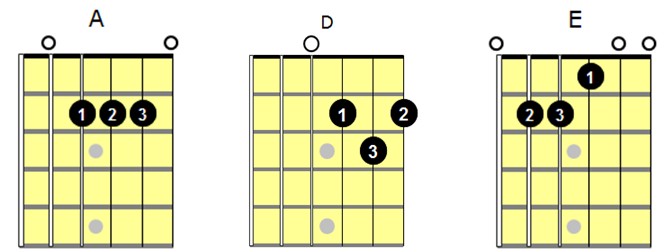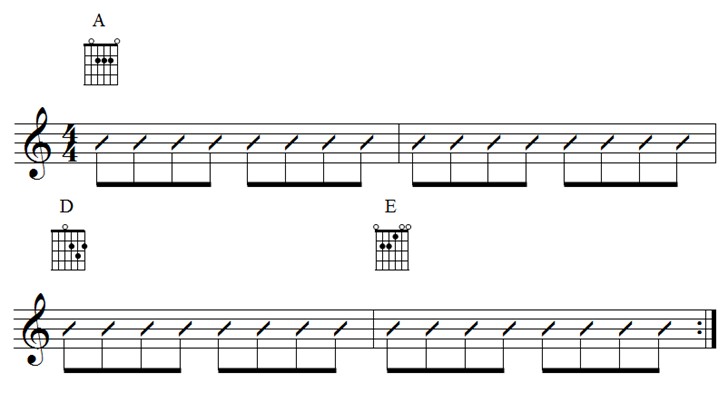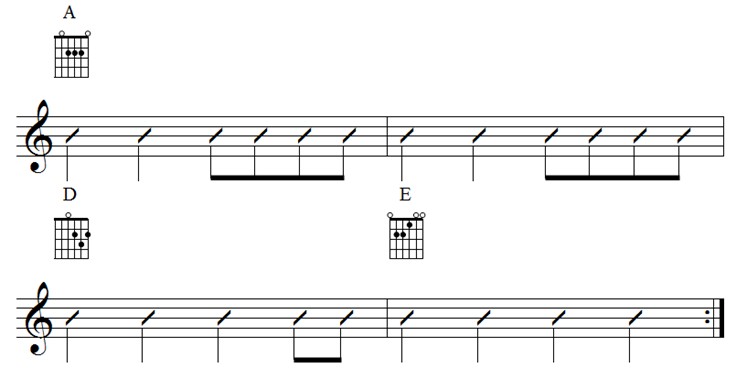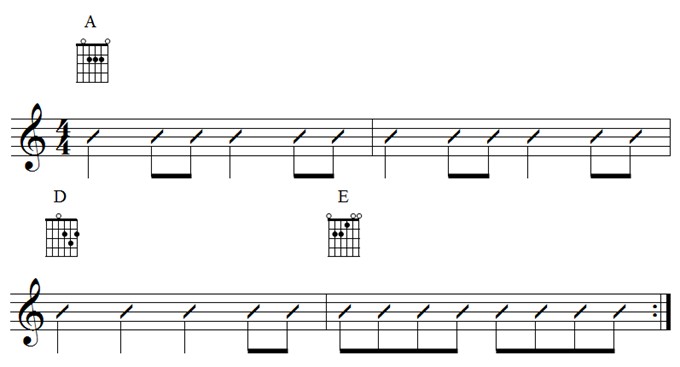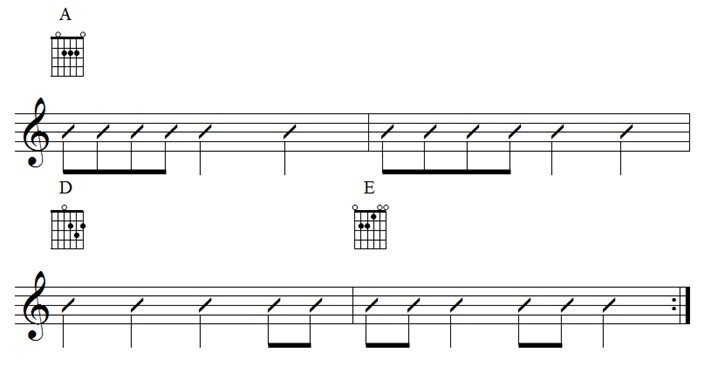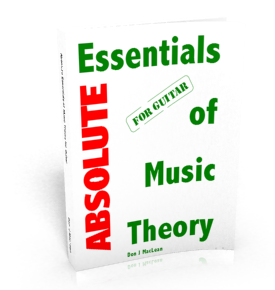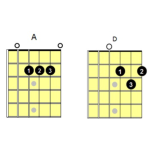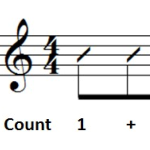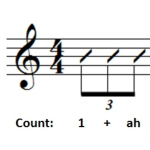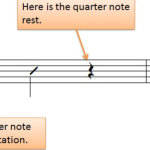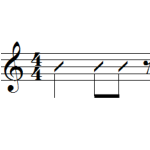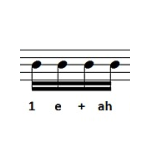Introduction
Now that you are familiar with the basics of counting, strumming and tapping your foot in time with eighth notes, we can turn our attention to some fun chord progressions that use eighth notes.
How to Apply Eighth Notes to Chord Progressions
Before we look at the chords, I want to bring up something that you need to consider.
When you are first learning to play the guitar, the are many competing things for you to work on. On top of that, there are many things that you need to do simultaneously.
Think about this for a moment…
Imagine that you do not know how to drive and you are sitting in a car ready to start your first driving lesson. You are in a foreign country where they drive on the opposite side of the road, and they use a language you do not understand a word of. Just image how difficult this would be!
This is actually very similar to first learning to play guitar. Music is a language of its own and you need to be able to do several things simultaneously to just strum a basic chord progression!
So what do most people do?
They make it way too hard! They try do everything at once and end up thinking it’s almost impossible to learn to play the guitar. The truth is it’s easy to learn the guitar if you make it easy on yourself!
How do you make it easy on yourself?
You…
Divide and Conquer
Learn the things you need to do simultaneously as separate things.
Once you’ve learned the separate components, you can then combine them together.
This is why we have spent lots of time learning the rhythms without the guitar in hand. Once you’ve got the basic rhythm down, it’s no longer a challenge to perform. So you can then focus on mastering the fingerings for the chords you need. Once you’ve got the fingerings down, you are ready to combine the chords with the rhythm.
As your skills improve, you will get to the point where you can look at a chord progression you’ve never seen before and strum the chords and rhythm perfectly at first sight.
But that won’t happen overnight. It will take some practice.
The good news is when you know how to practice and what to practice, it won’t take nearly as long as you think.
Okay, now that that’s covered, let’s move back to the chord progressions.
We are going to use A, D and E major chords.
You can substitute any chords you want, but the focus must be on the rhythm first, and chords second. That is for now, since our main focus is on mastering the basics of rhythm guitar.
If the chords are too challenging for you to play right now, then your focus will end up shifting to the technical aspects of performing the chords. And that is not where I want you to place your attention right now.
So if A, D and E are new chords for you, consider using G, C and D major for the following exercises.
If these chords are new to you, you can also decrease the rate of chord change in the progressions. So you can play through the entire rhythm pattern with just one chord if required.
Once you feel comfortable, play through the whole rhythm pattern using the second chord.
And finally, play through the rhythm pattern with the third chord.
Once you feel comfortable with that, you can start to play through the progressions as shown below.
Before you play through the following four strumming patterns, clap and count the rhythms out loud.
Strumming Pattern 1
Strumming Pattern 2
Strumming Pattern 3
Strumming Pattern 4
Remember, as you play through these rhythm guitar strumming patterns, be sure to count out loud, and tap your foot as you play along with the metronome. And don’t worry, you won’t become a slave to the metronome.
You will need to invest lots of time with the metronome when you first start playing. As your sense of rhythm improves, you will find yourself at the point where you will be able to play perfectly on time whether you play along with the metronome or not.
Have fun with this and create your own rhythm patterns.
In Part 10 of our rhythm guitar tutorial series, we will begin our look at eighth note rests. This will introduce us to some even more exciting rhythm guitar patterns.
Recommended Resource
Isn’t it time to get your hands on a proven, fast and easy way to learn the basics of music theory for guitar? The Absolute Essentials of Music Theory for Guitar lays out what you need to know about guitar music theory so it’s crystal-clear.
Mastering the basics of guitar theory will open up a whole new world for you. You will learn guitar faster and feel and hear big improvements in your guitar playing.
Get started now and take the mystery out of music theory so you can learn guitar faster…

